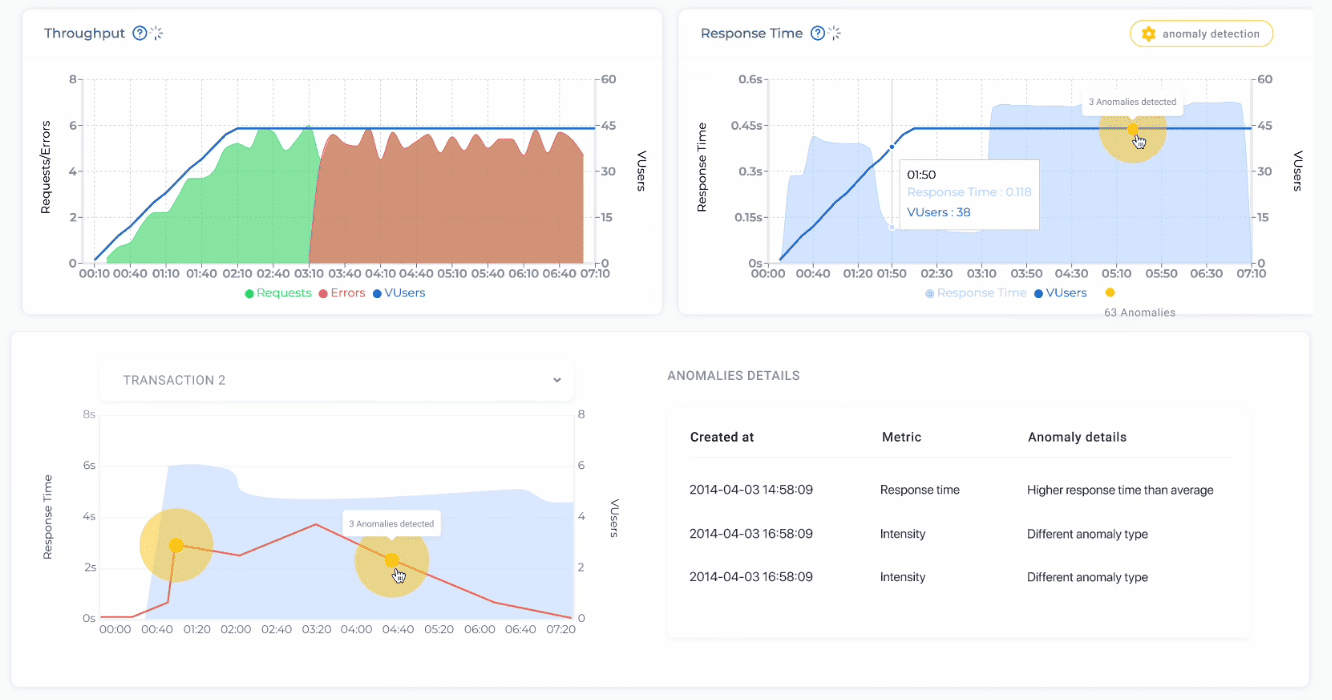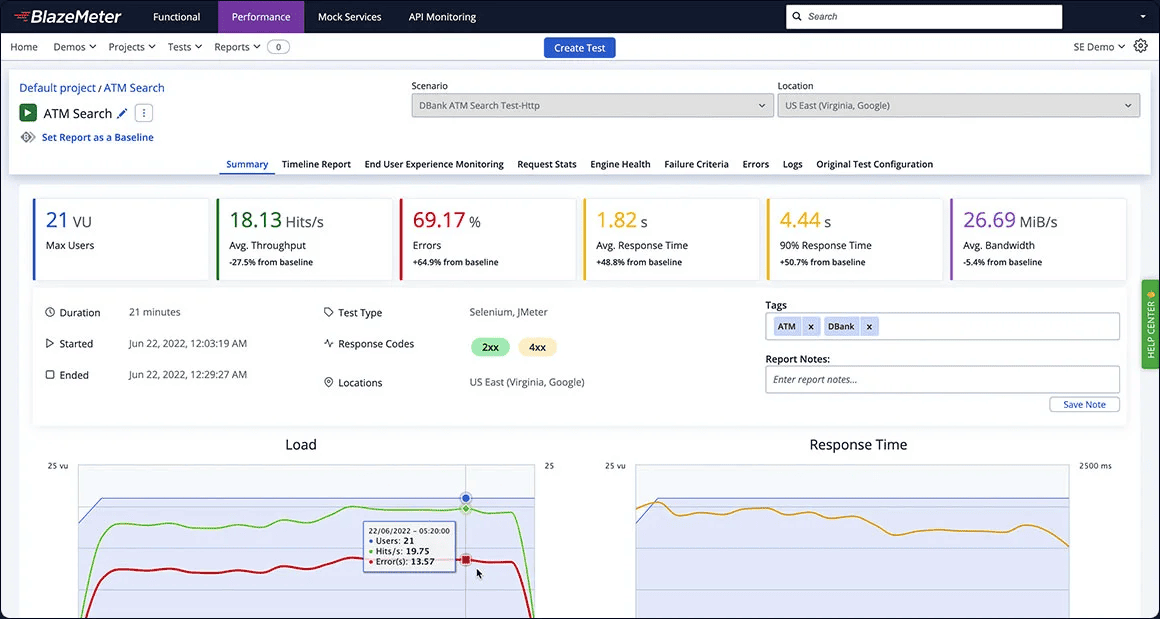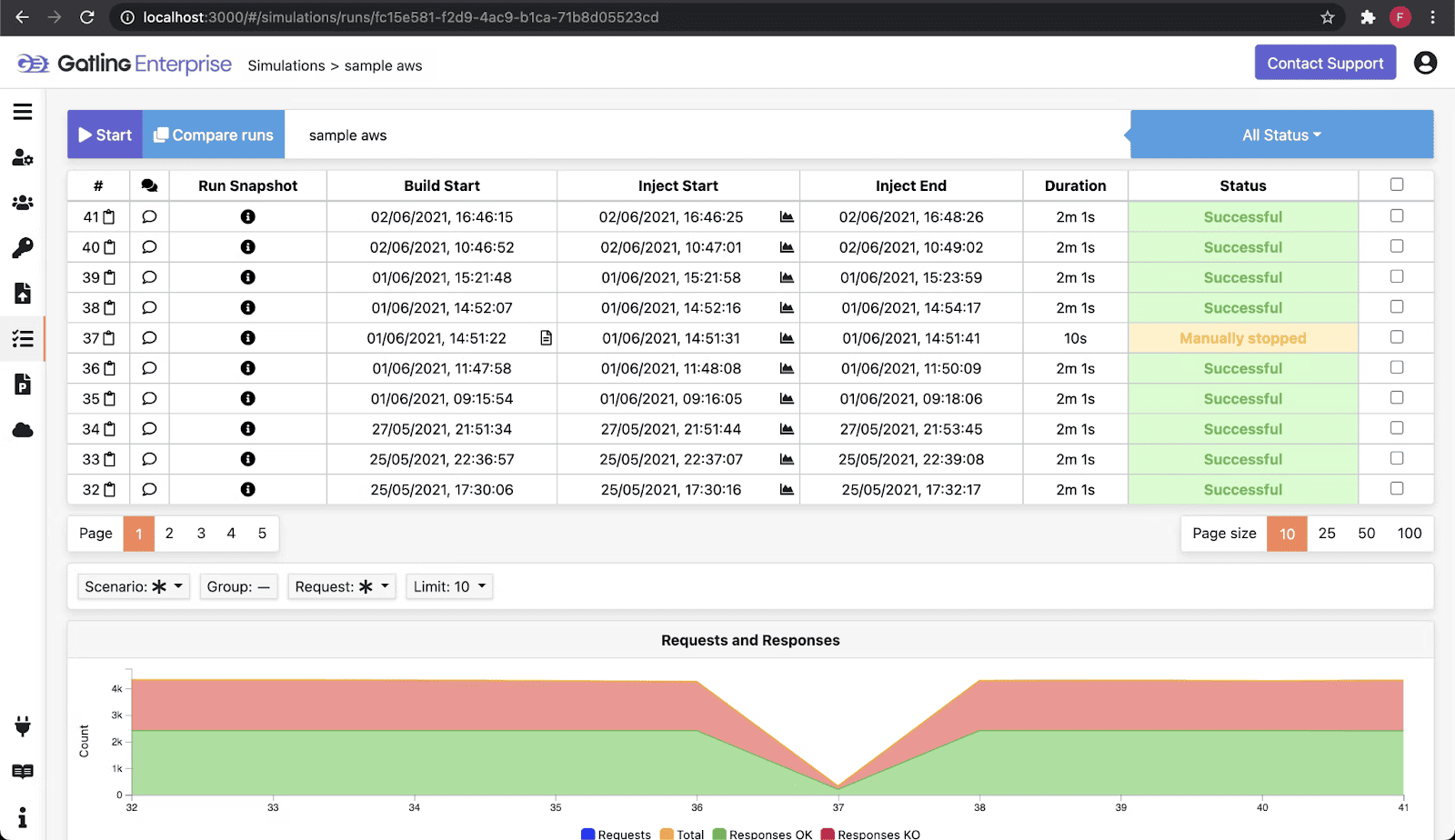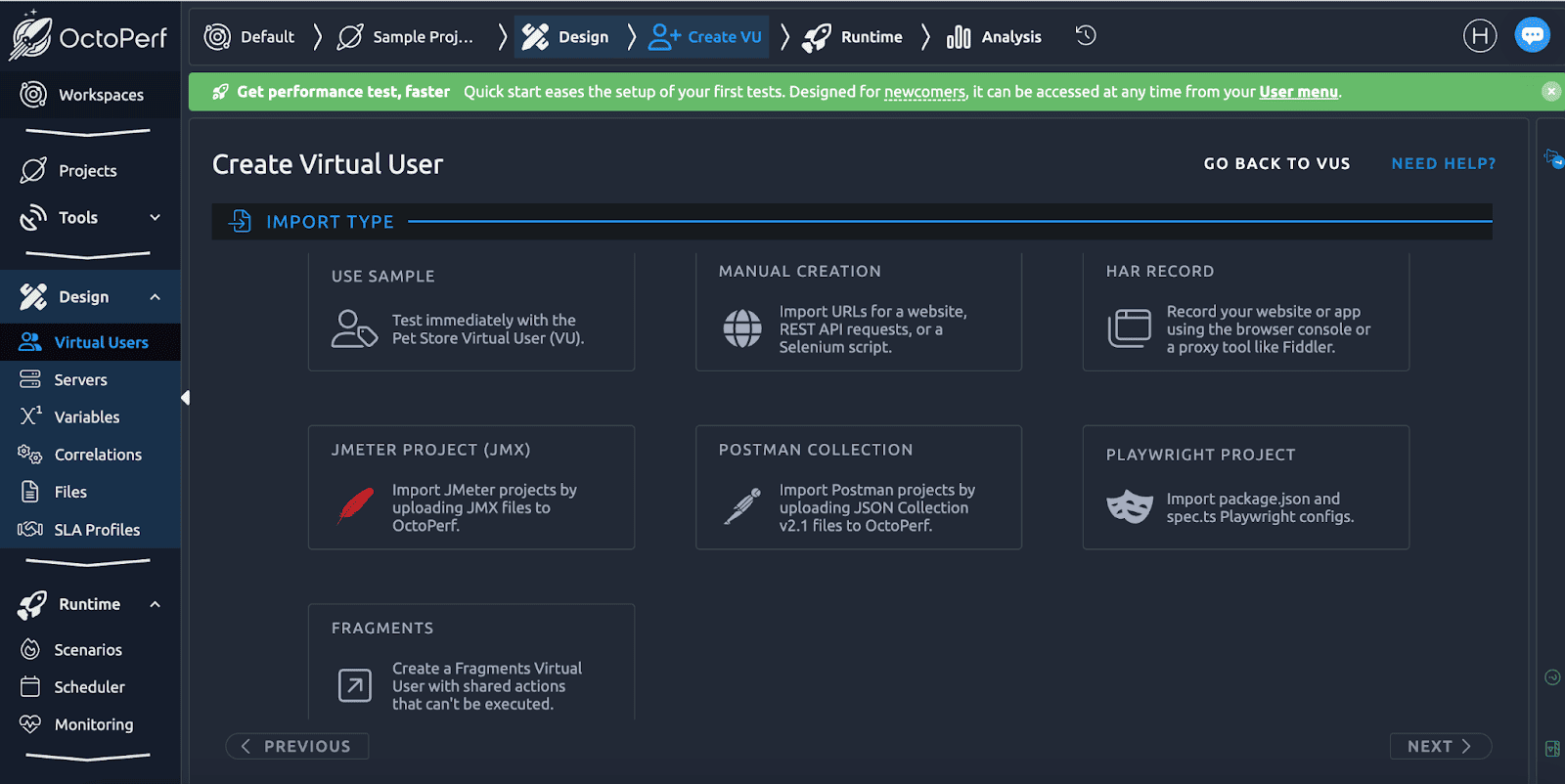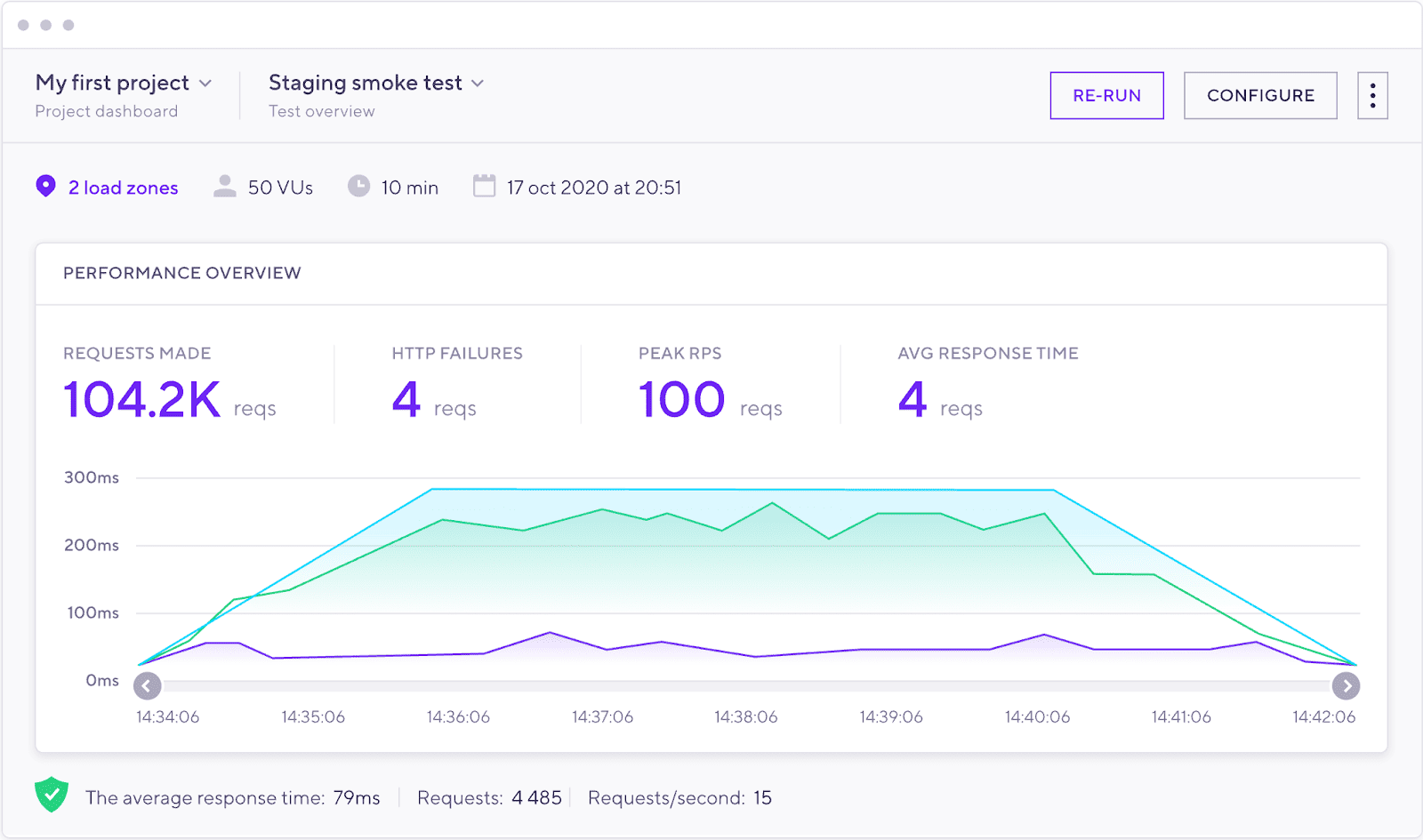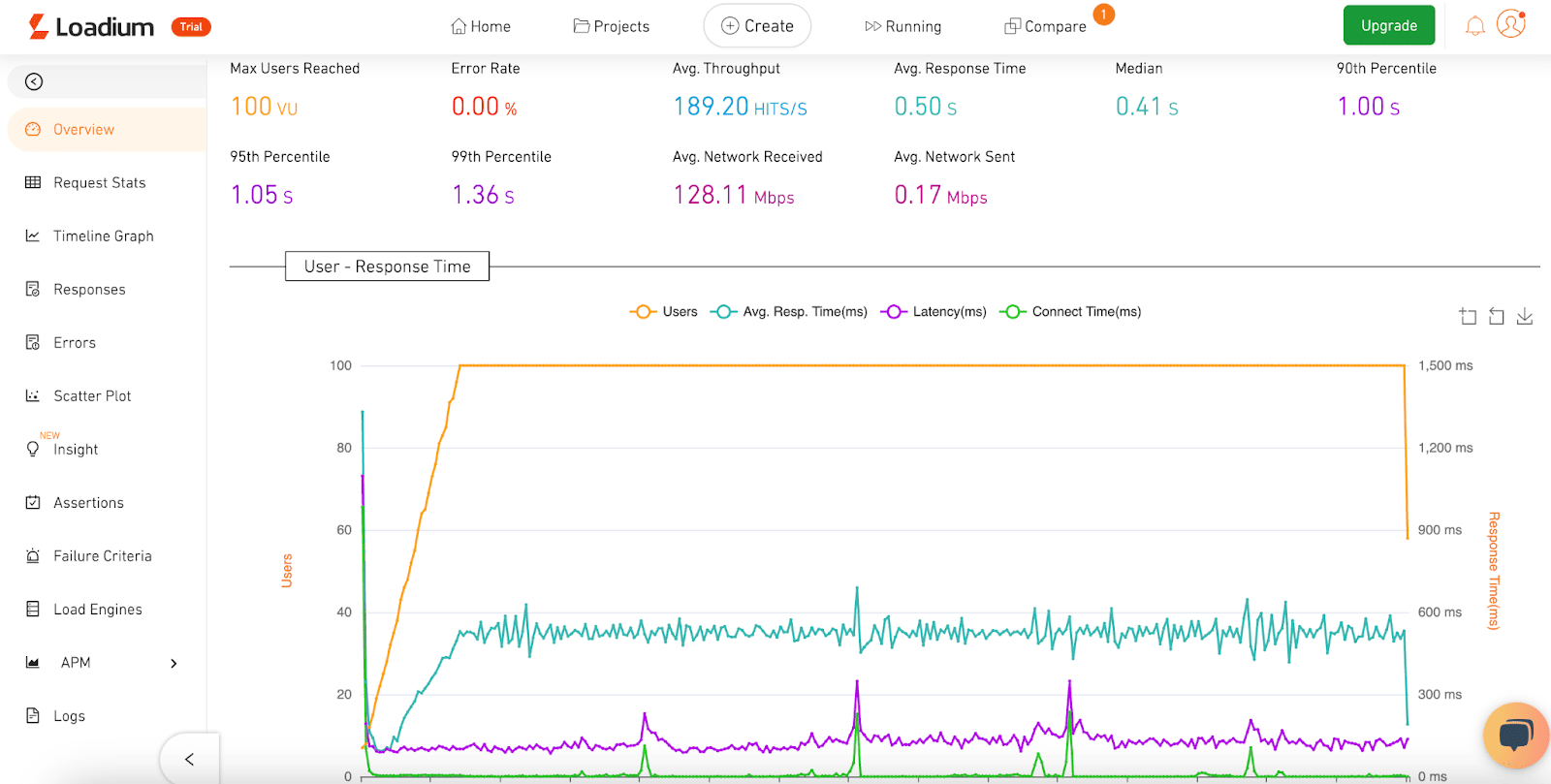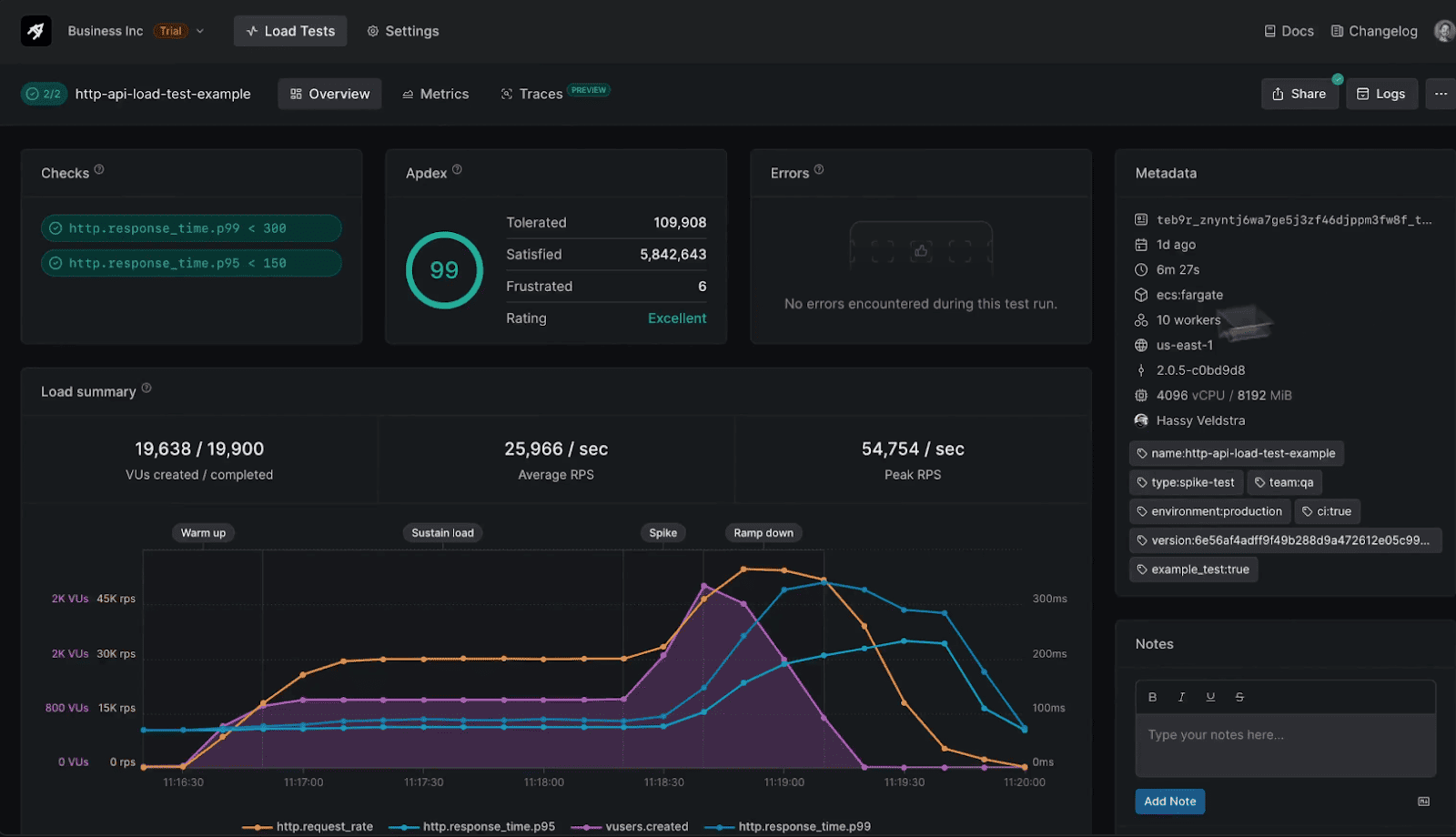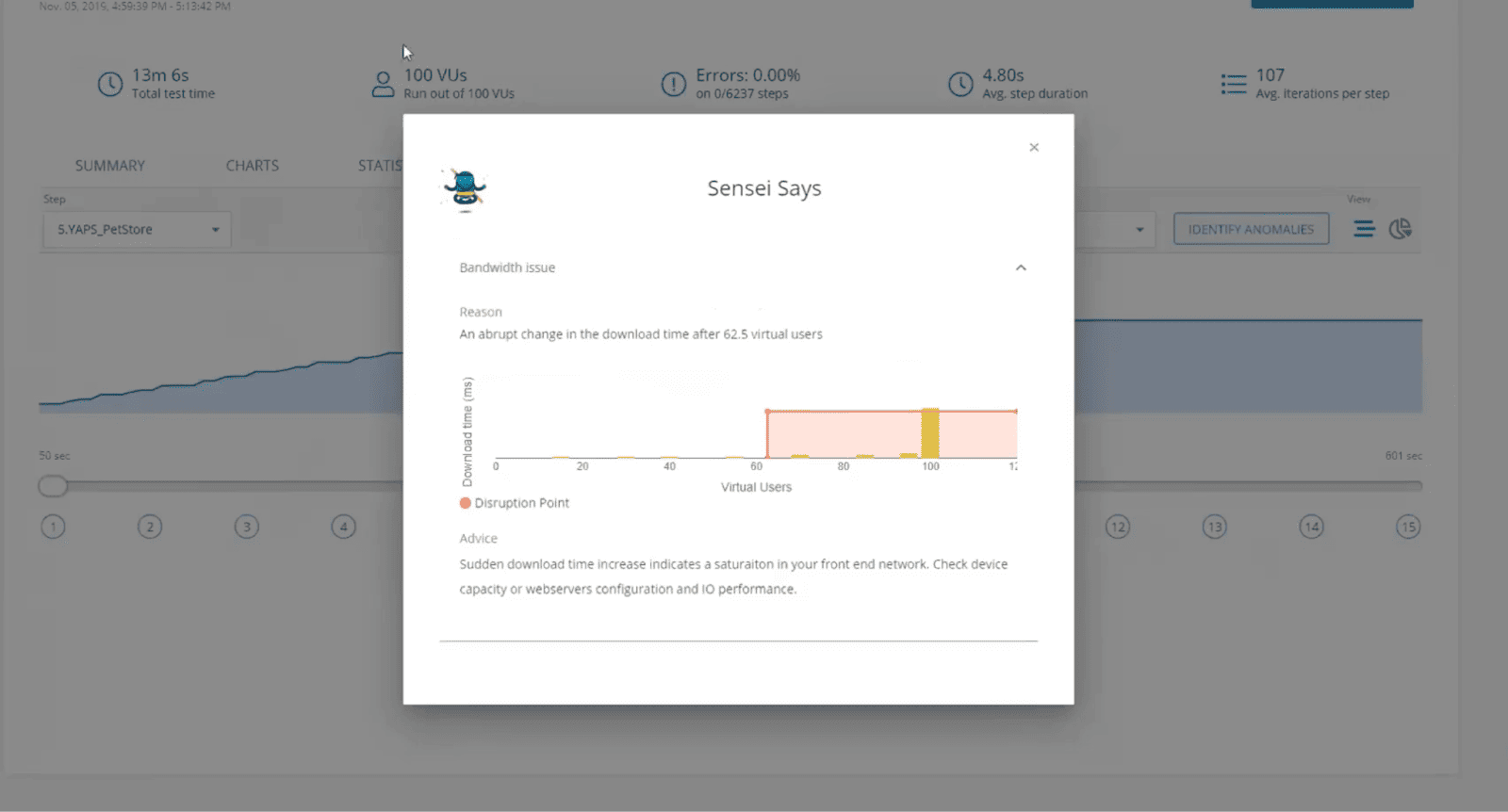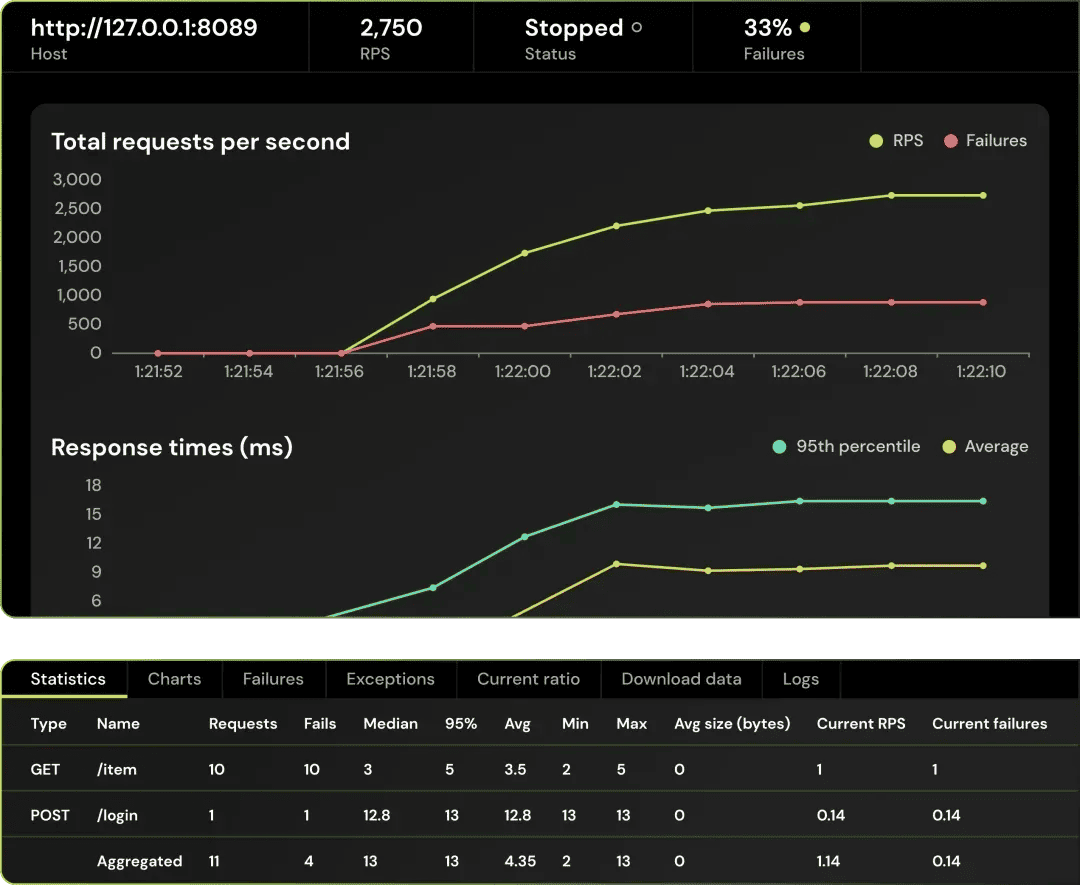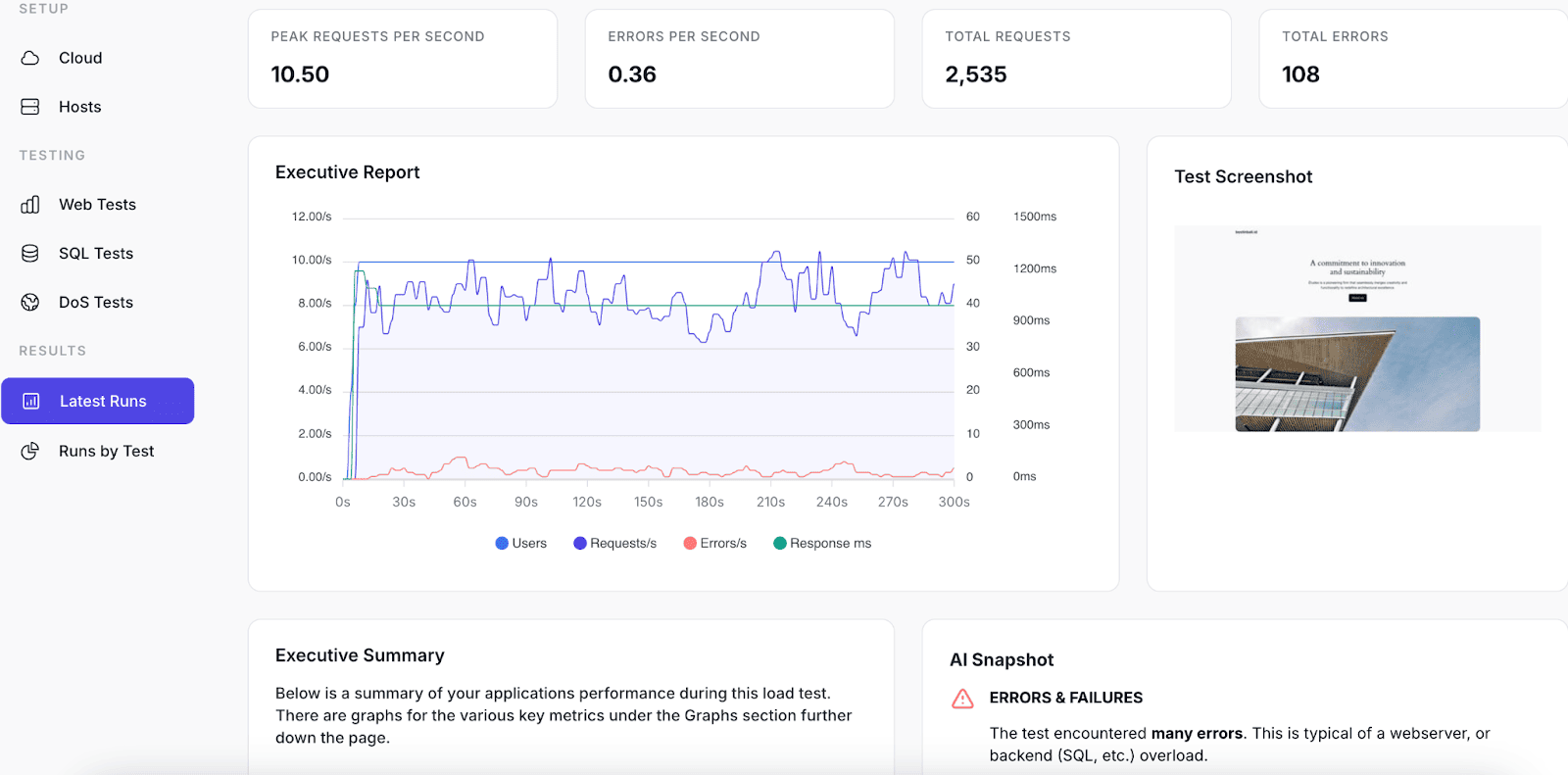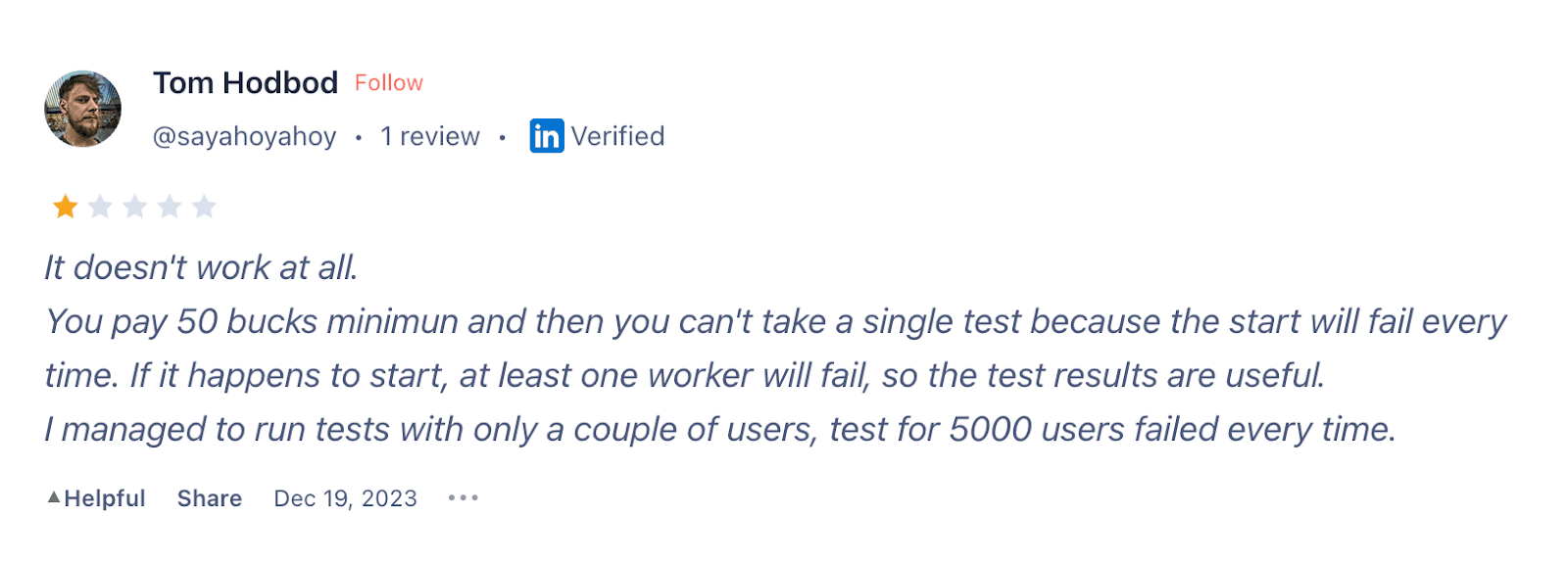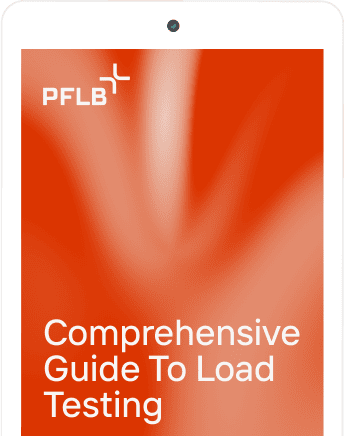Best Online Load Testing Tools Comparison Table
With so many load testing tools available today, it’s easy to feel overwhelmed by the options. Many of these tools can seem complex and unintuitive, often leading teams to skip load testing or search for cloud-based LoadRunner alternatives that offer more user-friendly experiences. Some teams have compared LoadRunner and NeoLoad tools to find the best fit for their specific requirements. However, skipping this vital step can lead to performance issues that may affect user satisfaction and even result in a decline in revenue.
To help you navigate the landscape, I’ve compiled a list of online performance testing tools for 2025. This best online performance testing tools comparison focuses on online tools, intentionally skipping legacy desktop solutions (with all due respect). You can read more in our blog post JMeter vs LoadRunner vs PFLB. I’ve gathered a great blend of open-source and commercial tools to meet various demands, from startups to global enterprises. Additionally, I highlight some of the fancy and innovative features available this year, ensuring you have the best load testing software to simulate real-world traffic and gain valuable insights effectively.
What is Load Testing?
Load testing aims to determine whether the system can handle the expected number of concurrent users, transactions, or data loads without slowing down, crashing, or experiencing other performance issues.
Load testing simulates user traffic to assess how well applications perform under different loads. QA engineers, developers, and SREs use online load testing tools to ensure applications meet performance requirements against response time or resource utilization. For APIs in particular, leveraging a cloud-based API performance testing tool allows teams to uncover bottlenecks and fine-tune behavior under stress. DevOps teams integrate these solutions into CI/CD pipelines to deliver reliable software, while IT operations focus on optimizing performance. Business owners, managers, and SaaS founders also rely on these tools to scale their products effectively.
While traffic simulation is one of the main features, having strong monitoring and reporting capabilities is crucial. These features help teams analyze performance metrics, identify issues, and gain insights to ensure applications run smoothly in real-world scenarios.
How I Compared Online Performance Testing Tools
When I set out to compare the best online load testing tools, I focused on what matters most for performance engineers, DevOps, SREs, and decision-makers. My main focus was on cloud capabilities and value for money. Instead of relying on documentation, I used each tool firsthand, either through trials or by purchasing the cheapest plan. This gave me a real feel for their usability, strengths, and weaknesses to find the best online load testing software.
Here’s what I looked for:
The TOP 10 Best Online Load Testing Tools
1. PFLB – 🏆
PFLB is a professional tool for performance engineers that simulates massive traffic to their web applications, ensuring they are prepared for increased load. With its integration of Google Analytics, PFLB mirrors real production traffic patterns in scenario-based simulations, providing highly realistic test conditions. The intuitive web UI delivers an excellent load testing experience for performance testing and development teams, including DevOps and SREs.
I’ve placed PFLB at the top of our online performance testing tools list because it goes beyond basic performance testing. Its AI-driven insights help you quickly spot performance bottlenecks before they become a problem. Performance testers will appreciate the variety of tools available—like JMX, HAR, and Postman imports—making it easy to set up and run tests in the cloud without worrying about infrastructure. That definitely makes PFLB one of the best website load testing tools. For teams considering top cloud options for JMeter load testing, PFLB offers excellent compatibility while providing more advanced analytics capabilities.
The detailed dashboards make it simple for CTOs and IT managers to analyze test results and track performance over time. Overall, PFLB stands out as a new-generation performance testing solution, allowing users to effortlessly create, run, and manage tests with a user-friendly interface.
Pros
Cons
Protocols
Price – $$$$$
PFLB is a cloud-based subscription solution, so you only pay for what you use. A free license allows up to 5 test runs, while pricing for more tests starts at $50 per month.
2. BlazeMeter
BlazeMeter is a commercial cloud-based performance testing platform that supports running tests built with open-source tools like JMeter, Gatling, Grinder, and Locust (read more about Blazemeter alternatives). It offers a scriptless test builder for creating scenarios and provides basic analytics for test results. When choosing between Gatling vs. JMeter for your testing needs, consider factors like scalability and scripting complexity. BlazeMeter also provides open-source plugins like Taurus for continuous testing and includes handy load testing automation tools like the JMeter Debugger for step-by-step test troubleshooting.
Pros
Cons
Protocols
Price – $$$$$
3. Gatling
Gatling is a performance testing tool that’s included in this list due to its Enterprise Cloud solution. Its open-source version allows users to write tests in Scala. The commercial service provides hosted load generators and a web interface, making it easier to run large-scale tests without the need to manage your own testing environment infrastructure.
Gatling is script-based, so some programming knowledge is required, particularly in Scala or Java. However, it offers extensive documentation to help with setup and testing. Its cloud platform integrates well with CI CD tools, making it practical for teams looking to automate and scale their automated performance tests.
Pros
Cons
Protocols
Price – $$$$$
4. Octoperf
OctoPerf is an enterprise-level load testing solution that positions itself as a JMeter Performance Center. Like other best website load testing tools it supports load testing for web applications and APIs, allowing users to leverage existing JMeter scenarios, import from Postman, Playwright, and HAR files, or use its advanced test builder. OctoPerf is a professional tool offering robust load test configuration options and detailed reporting capabilities, making it well-suited for advanced performance testing needs.
Pros
Cons
Protocols
Price – $$$$$
5. Grafana Cloud K6
K6 is an open-source performance testing solution designed for software developers using JavaScript for scripting. It is used for load testing websites, APIs, GraphQL, WebSocket, gRPC, and more. Grafana Cloud K6 is a commercial, cloud-based extension that enhances K6 with cloud capabilities, including hosted load generators, distributed test execution from 21 locations, and the ability to run load tests in the cloud with up to 1 million concurrent virtual users.
Cloud K6 provides users with intelligent performance insights, helping to identify application performance bottlenecks and detect performance changes by comparing test results and tracking trends over time. Learn more about k6 alternatives in our article.
Pros
Cons
Protocols
Pricing – $$$$$
Cloud K6 pay-as-you-go pricing can be confusing because you’re charged not only for VU hours but also for additional services like Grafana metrics, visualizations, and logs.
If we were only charged for VU hours, the pricing would look like this:
However, it is complicated to predict the final cost.
6. Loadium
Loadium is one of the best online load testing tools that simplifies performance testing with an intuitive platform suitable for all skill levels. Users can quickly start tests by uploading JMeter or Gatling scripts or building them manually.
The platform offers script conversion features and precise load control settings. Key features include access to Amazon instances, dedicated IP addresses, APM tools, and Jenkins integration. The Loadium Record & Play extension enhances test recording and execution.
Pros
Cons
Protocols
Price – $$$$$
7. Artillery
Artillery is an elegant performance testing tool designed for simulating traffic with virtual users. It also supports browser-based load testing by running your Playwright scripts. Tests can be executed from the command line using a simple YAML file for test definitions. Artillery is also known for being among the best gRPC testing tools available, making it valuable for teams working with high-performance microservices. Additionally, you can access Artillery Cloud—a hosted service that offers fancy dashboards and essential load testing results, making it easier to analyze your performance data.
Pros
Cons
Protocols
Price – $$$$$
8. LoadNinja
LoadNinja is a cloud platform for browser-based performance testing of websites and web applications. It employs real browsers instead of load emulators, providing actionable browser-based metrics to measure application performance.
It includes AI capabilities that automatically manage dynamic values like session IDs and tokens, minimizing manual work. Additionally, it detects anomalies based on load testing data, helping identify issues faster.
Pros
Cons
Protocols
Price – $$$$$
9. Locust
Locust is a modern load-testing tool based on Python scripts. It has an open-source command-line interface, but what makes me put it on this list of the best online load testing tools is its cloud-based commercial solution, Locust.cloud, built and supported by Locust maintainers. These cloud capabilities include essential things like hosted load generators and a web UI for running tests.
Although the Locust tool demands a foundational understanding of programming, it compensates with comprehensive documentation. This documentation thoroughly covers the framework’s features alongside practical examples of code, load tests, setup for distributed testing, Docker deployment, and more, providing valuable resources for both novice and experienced developers alike.
Pros
Cons
Protocols
Price – $$$$$
10. LoadForge

LoadForge is a load testing tool that helps teams assess the performance of websites, APIs, and SQL. It features an intuitive web UI, allowing users to create tests using graphical workflows, and supports scripting in Python, leveraging Locust under the hood. LoadForge offers real-time analytics, integrates well with CI CD tools, and has the ability to test SQL and simulate DoS attacks.
It also includes basic AI features, such as a GPT-based report summarizer and an alpha version of an AI writer that generates Locust scripts. However, there is no free package, and the $49 per month basic package is surprisingly limited in functionality, allowing only 10-minute web tests.
Pros
Cons
Protocols
Price – $$$$$
I found LoadForge’s pricing excessively high, charging $49 per month for basic features that other products on this list provide for free—and those features don’t even work properly.
Conclusion
In conclusion, the right load testing tool can greatly impact your application’s performance and reliability. Whether focusing on protocol support, integration, or advanced features like AI insights, there’s a tool to meet your needs. PFLB best fits performance engineers and offers modern AI-powered performance insights. OctoPerf and BlazeMeter are solid choices for QA teams, K6 suits SREs, Artillery is ideal for DevOps, and Gatling is great for large-scale tests with excellent VUH pricing.
Add this page to your bookmarks and check again, as I update it regularly by adding new tools. Thanks for reading!
Related insights in blog articles
11 API Failure Causes and How To Solve Them
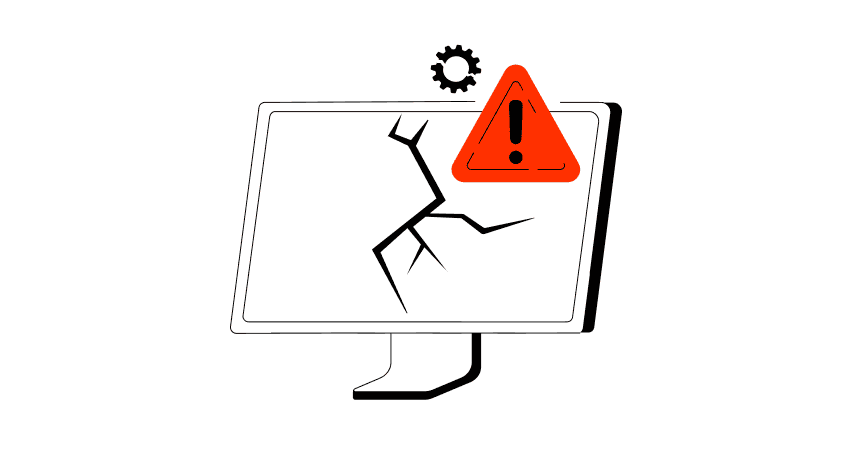
When an API fails, the consequences ripple quickly through the entire system. Transactions stall, integrations break, and frustrated users flood your support channels. Understanding exactly why API failures happen — and how to fix them — is essential for developers and businesses alike. This article examines the most common reasons behind API failures, explores the […]
API Mocking: A Complete Guide
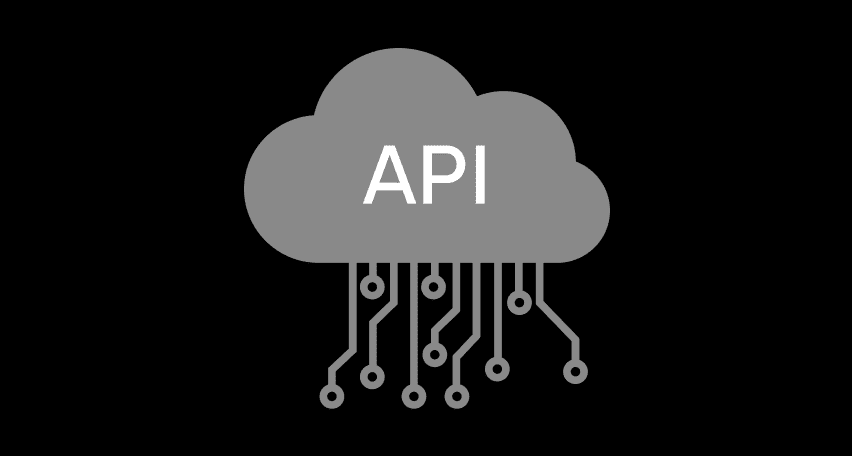
Waiting for APIs to become available or stable can slow down entire projects. API mocking provides a smart way to avoid these roadblocks by simulating real API responses, keeping your teams productive and ensuring smoother integration down the line. In this guide, you’ll discover exactly what API mocking involves, how it differs from using real […]
API Endpoint: A Complete Guide
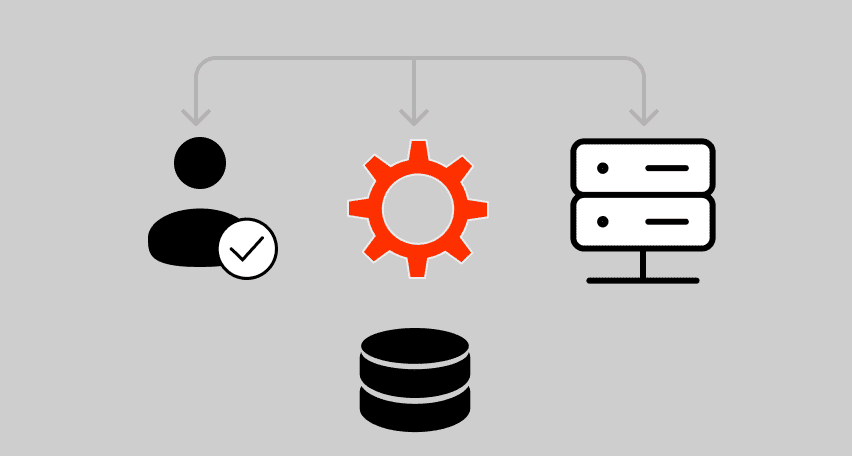
Modern applications rely heavily on APIs (Application Programming Interfaces) to communicate and exchange data across different systems. At the heart of this interaction lies the API endpoint — a fundamental concept that defines where and how data exchanges happen. This guide explains clearly what an API endpoint is, outlines its importance, and provides practical insights […]
gRPC vs. REST: Detailed Comparison

Choosing between gRPC and REST can feel confusing, especially if you’re trying to figure out the best way for your applications to communicate. This article breaks down the grpc vs rest comparison clearly, without jargon or confusion. You’ll learn exactly what each protocol is, the advantages and disadvantages of each, and understand why gRPC is […]
Be the first one to know
We’ll send you a monthly e-mail with all the useful insights that we will have found and analyzed
People love to read
Explore the most popular articles we’ve written so far
- Cloud-based Testing: Key Benefits, Features & Types Dec 5, 2024
- Benefits of Performance Testing for Businesses Sep 4, 2024
- Android vs iOS App Performance Testing: What’s the Difference? Dec 9, 2022
- How to Save Money on Performance Testing? Dec 5, 2022



